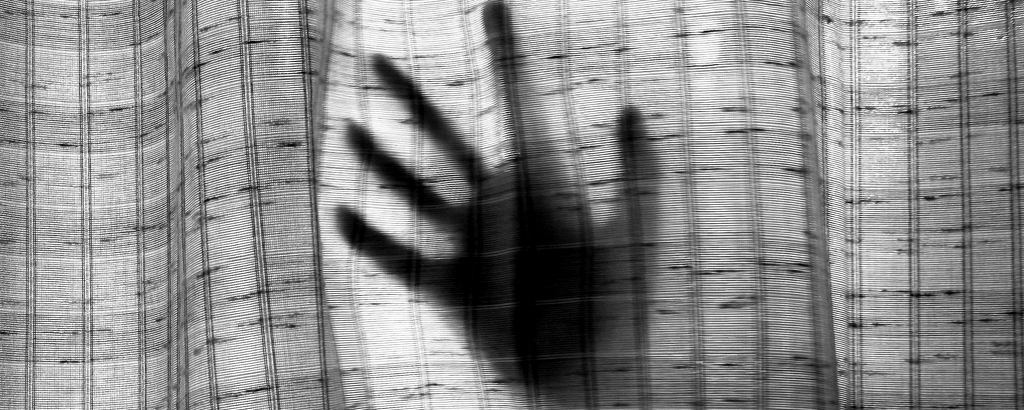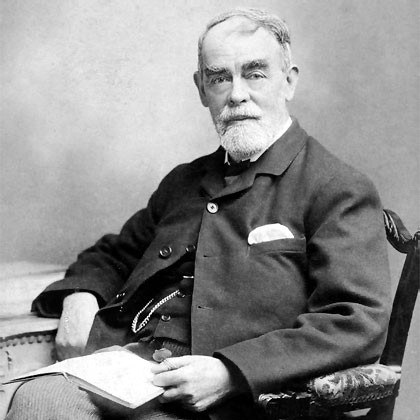Transhumanism in Fiction: Normalizing to the Uncanny Peak
Putting the Human in the Transhuman Equation
In speculative fiction, themes of transhumanism abound. Balancing high-concept ideas, from human genetic modification to biotechnological integration, become a critical area of thought and focus for a writer. Presenting correct normal human reaction to extraordinary circumstances is something that many writers aspire to competently represent. Transhuman transformation and end-forms often fall into the category of extraordinary. In situations where the normalized human majority encounters a transhuman figure or group, correctly anticipating the reaction can be difficult.

The rational acceptance of transhuman forms according to the created world of a science fiction novel requires a look at not only the human psyche, but also acknowledgement that human augmentation or change may come about through a chain of normalization events. The uncanny valley theory is very valuable here, especially when the inverse is used to predict the acceptability of transhuman concepts. This article is by no means comprehensive or academic in nature. However, taking a moment to ponder the basic ideas of how a transhuman individual may be viewed by the general public is an interesting thought exercise for anyone who creates or dreams of tomorrow.
What does it meant to be Transhuman?
Transhumanism is a broad concept. It is typically distilled down to various notions of human enhancement above the currently accepted range of normal human capabilities. For some, modest biological modifications that are in use now, from medical prosthetics to drug enabled performance improvements, fall within the boundaries of the transhuman realm. Transhuman is most often defined as a permanent modification to a person, designed to allow that individual to exceed current human physical or mental performance over the 100th percentile. Transhuman changes may even be conducted prenatally or part of a genetic inheritance, passed down through successive generations in directed evolution.
Although transhumanism is often associated with the technological singularity, it is an exclusive concept, though not mutually exclusive. Transhuman modification can occur, to a degree, with our current level of advancement. Transhumanism is limited only by our imagination and current understanding of technology and biology. The concepts surrounding the technological singularity are often seen as key enablers of transhuman ideas.
Current Pathways to a Transhuman Mode of Existence
There are many pathways that seem to lead to a transhuman state of existence. In both fiction and scientific theory, human augmentation may be accomplished through multiple means. In the past, genetic modification and eugenics were seen as the most likely method of creating superior human beings. As time has passed, the idea of the cyborg, or a human enhanced by technology and circuitry was introduced.
Today, technological singularity concepts present a wide field of options that will enable transhumanism. Cybernetics and consciousness transfer to android bodies are one popular means of reaching transhuman, while a complete abandonment of the physical body into an electronic form is starting to gain notoriety. Permutations that involved various combinations of these forms of human augmentation are well established in fiction.
The Uncanny Valley
The ‘uncanny valley’ is a pseudo-psychological theory that human beings have an unease or instinctual disgust with objects or images that attempt to mimic a normal human being, but fall short from doing so. In the illustration below, the valley represents the degree of deviation an object is in human likeness, compared against a normal and healthy person. Objects that are far from mimicking or representing a human being, such as a stuffed animal or even a human-shaped robot have little impact on the human psyche. However, when an attempt is made to create something that is only a few degrees of perception off the familiar range of human appearance or action, human beings begin to feel uneasy.
A prime example of the uncanny valley can be seen when a person encounters a realistic animatronic figure of a person in a museum or show. Although the automaton is close to the appearance of a living person, there are multiple indicators that the animatronic figure is not a real human. Jerky or unnatural movements, glossy skin, dead eyes, and a whole host of subtle differences cause human beings to begin to feel uneasy. The effect is amplified when the figure appears to be distorted, bleeding, mangled, or medically disfigured. Perhaps that is why zombies are such a hot horror property, as the human mind sees something that is not only ‘off’ from a normal person, but a potential vector for disease. The encounter with something deep in the uncanny valley may cause anxiety or a fear response in a healthy person.

The Uncanny Peak
It is interesting to note, that when writing science fiction the singularity and other advanced technological states always seem to bring transhumanism to the forefront. People have a comfort with and often expect that humanity will have to evolve or change to keep pace with technological advancement. In most cases, readers enjoy exploring themes of super-human achievement, both optimistic and pessimistic in nature.
As a part of the human condition, those super-human notions are the basis of many historical and mythological stories. Ever since man started writing fiction, the super-human has been a mainstay component of many creative tales. It seems that the classic representations of being super-human is ingrained in the the human psyche. Transhumanism in fiction is a natural extension of these themes as we move into modern storytelling.
In practical terms, the acceptance of a modified transhuman by a normal and healthy person may hinge on degrees of separation. The uncanny valley asserts that a degraded or imperfect mimicry of a human being is cause for disgust. Considering that transhumanism involves improving an individual beyond what is accepted as normal, there is the potential for a second uncanny valley to form. In this dual uncanny valley, the current state of a normal-human becomes the peak between the slopes.

On the post-normal-human downward slope, human beings may be adverse to modifications that enhance human performance and appearance. At the start of the downward slope, enhancements that bring about improved physical and mental performance will be generally accepted. However, as the performance or change deviates from the peak normal by a growing margin, a backlash against transhuman modifications may become apparent. Outward physical changes or augmentation will be the most common form railed against by the peak normal human, as the uncanny valley is heavily biased to visual perception. However, mental feats may also inspire trepidation or distrust by non-augmented individuals.
From the perspective of the uncanny peak, augmented humans will likely be accepted if their modifications are considered minor or benign. Today, most people would not question a person whose eyesight was slightly better, or who has heightened concentration through technological augmentation. However, as the slope into super-human or transhuman forms increase, people become envious at best and frightened at worst. Transhumans will likely face prejudice as they reach the bottom of the second uncanny valley. As transhumans emerge into the realm of fantastical capabilities or appearance, acceptance may become easier to gain. Those at the peak may view highly modified individuals as posthuman or something altogether different.
Therefore, when handling public acceptance of a transhuman augmentation in writing, outward appearances are most likely to cause dissention or hostility. As a transhuman sheds pieces of human form for the cybernetic, the further the delta between normal and the uncanny valley, the fewer acceptances the transhuman will hold. For internal or nonvisible augmentation where the subject appears normal, there is a much wider range of accepted advancement. However, the uncanny valley still applies when the augmentation is demonstrated in the presence of a normal, uncanny peak individual.
Oddly enough, when the transhuman changes border upon the posthuman, acceptance becomes more widely granted. Perhaps the human psyche sees a vastly different form as another species or so dissimilar as to not be frightening. Familiarity is a key concept in the uncanny valley, and when familiarity is lost, fear based upon the uncanny valley diminishes. That fear can be transferred to fear of the unknown or fear of superiority. However, if the transhuman figure is benign, fear is often replaced with fascination and wonder.
The Uncanny Peak Moves as Transhumanism Progresses
One interesting concept to consider is the movement of the uncanny peak. The uncanny valleys will shift, meaning the current normal peak will become less accepted as changes take hold and become commonplace in the second uncanny valley. Like a wave where the crest moves forward, so will the uncanny peak. As a change becomes adopted by the masses, normalization will occur creating a new peak.
For example, if the majority of humans adopt a genetic change that increases their performance in a similar fashion, that populace will become the new normal. Members of the previous majority populous will then slide down the slope backward into the uncanny valley. The changes on the forward slope, towards transhumanism, will cause individuals that were in the transhuman uncanny valley to climb up the on the slope, moving toward normal. Therefore, the uncanny peak and valleys can evolve and normalize to widely accepted changes.
For writers and other creative minds, the notion of acceptance is something that will weigh heavily as we begin to tackle the future, both real and imagined. However, it is important to remember that humanity is not static but subject to evolution both genetic and technological. The timing and degree of changes that occur will have a major impact on how people will perceive and embrace change. Using the concepts of the uncanny valley and uncanny peak will help content creators better understand or predict reactions to transhuman ideals.
About the Author:
 Tracy R. Atkins has been a career technology aficionado since he was young. At the age of eighteen, he played a critical role in an internet startup, cutting his tech-teeth during the dot-com boom. He is a passionate writer whose stories intertwine technology with exploration of the human condition. Tracy is also the self-published author of the singularity fiction novel Aeternum Ray.
Tracy R. Atkins has been a career technology aficionado since he was young. At the age of eighteen, he played a critical role in an internet startup, cutting his tech-teeth during the dot-com boom. He is a passionate writer whose stories intertwine technology with exploration of the human condition. Tracy is also the self-published author of the singularity fiction novel Aeternum Ray.









